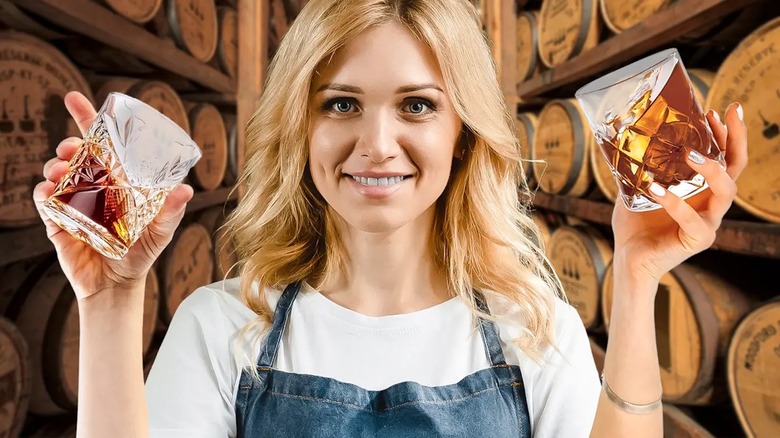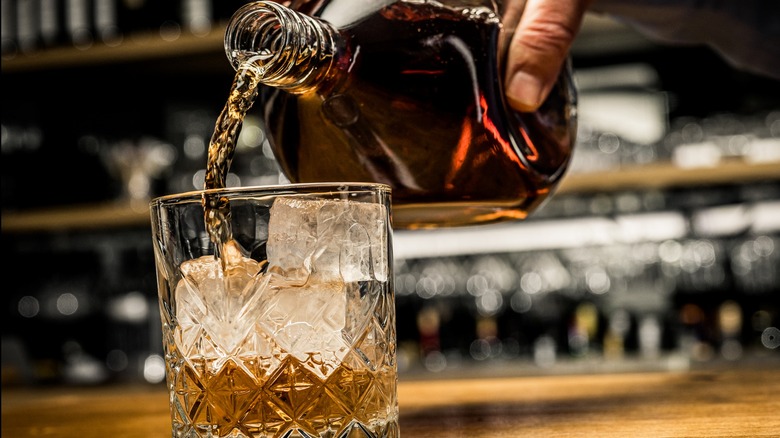The Difference Between A Good And A Bad Whiskey, According To A Tasting Expert
Whiskey, as well as other liquors, can seem a bit complicated. So, it may be overwhelming if you're looking to get into drinking whiskey — especially if you want to be able to distinguish a good one from a bad one. To better advise those of you in this situation, Tasting Table consulted with an expert to get the lowdown on determining whiskey quality. The expert in question is food journalist and advanced cicerone Mandy Naglich, whose book, "How to Taste: A Guide to Discovering and Savoring Life" is now available for purchase.
When it comes to good whiskey, Naglich explained that, above all else, it'll have a complex odor and taste. "You should notice certain top notes in the aroma like vanilla, caramel, or coconut," she said, adding, "The flavor might start off nutty similar to toasted walnuts and then shift to reveal some baking spices or stewed fruit. That shift in flavor with many notes layered on top of each other is what you're looking for in a well-made spirit."
In other words, it should taste different at the beginning than it does by the end — and, just when you think it's done, there may even be more subtle changes. Naglich added, "The complexity will continue into the finish and may shift again to reveal a slight drying tannic mouthfeel or a pleasant warming."
What does bad whiskey taste like?
Now that we know what a positive experience drinking whiskey should be like, it's time to cover the opposite end of the spectrum: bad whiskey.
Inferior whiskey lacks complexity. As Mandy Naglich explained, "Whiskeys that aren't so good will be very one note (often vanilla or caramel) and they will also finish quick and hot." She then noted that, of course, it's common for just about any whiskey — or any alcohol — to have somewhat of a hot feeling when you drink it, but explained that there's a difference between a pleasant "warming" feeling and a too hot feeling. She continued, "Anything that can be described as burning or very hot is a sign of less-than-careful whiskey production."
Now that you know how to identify a good whiskey versus a bad whiskey, it's time to start tasting the finer flavor notes within the spirit. To begin, you can reference Tasting Table's list of the 17 best 2023 whiskeys so far — none of which should have that harsh burning finish that Naglich has warned us about.

